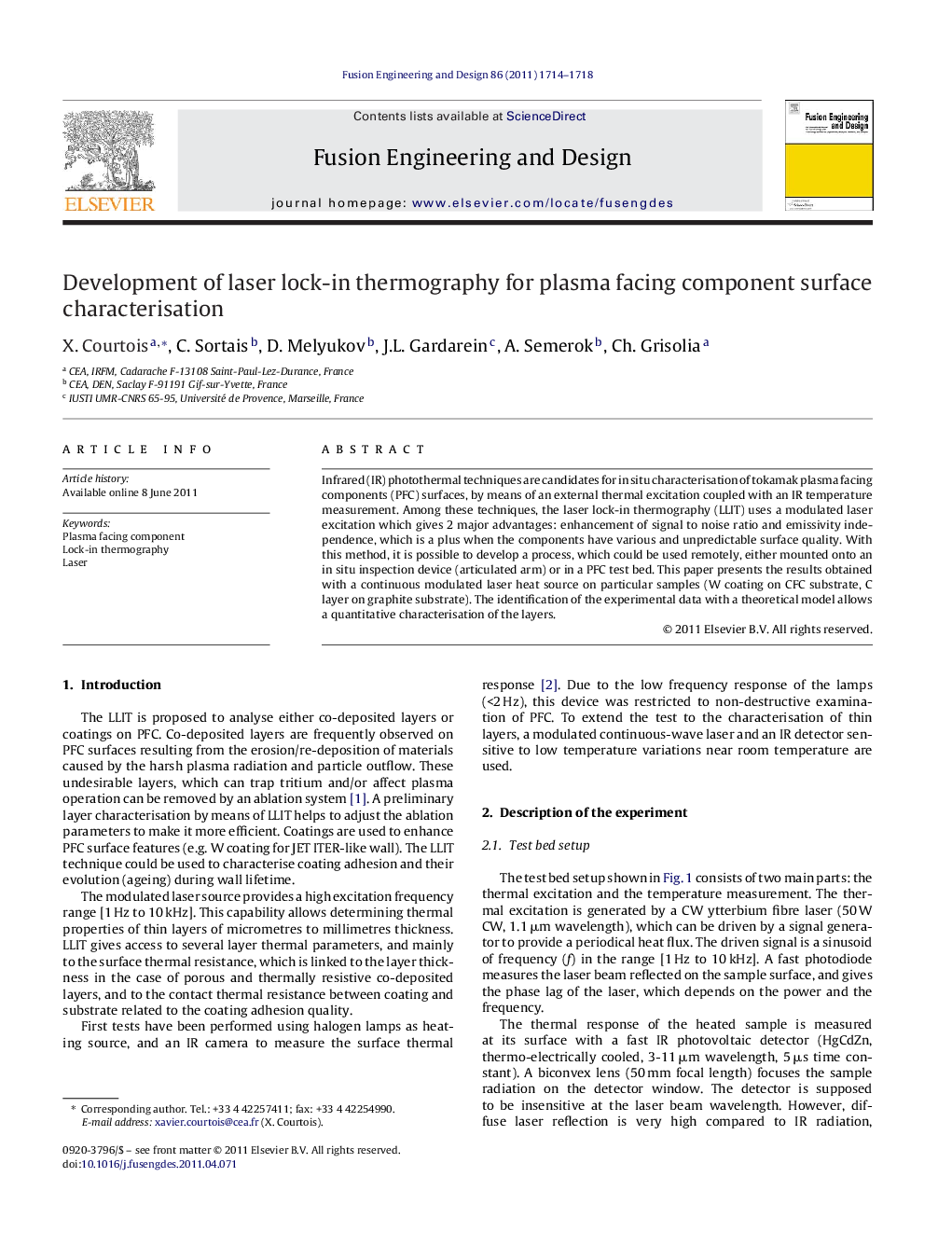| Article ID | Journal | Published Year | Pages | File Type |
|---|---|---|---|---|
| 271833 | Fusion Engineering and Design | 2011 | 5 Pages |
Infrared (IR) photothermal techniques are candidates for in situ characterisation of tokamak plasma facing components (PFC) surfaces, by means of an external thermal excitation coupled with an IR temperature measurement. Among these techniques, the laser lock-in thermography (LLIT) uses a modulated laser excitation which gives 2 major advantages: enhancement of signal to noise ratio and emissivity independence, which is a plus when the components have various and unpredictable surface quality. With this method, it is possible to develop a process, which could be used remotely, either mounted onto an in situ inspection device (articulated arm) or in a PFC test bed. This paper presents the results obtained with a continuous modulated laser heat source on particular samples (W coating on CFC substrate, C layer on graphite substrate). The identification of the experimental data with a theoretical model allows a quantitative characterisation of the layers.
